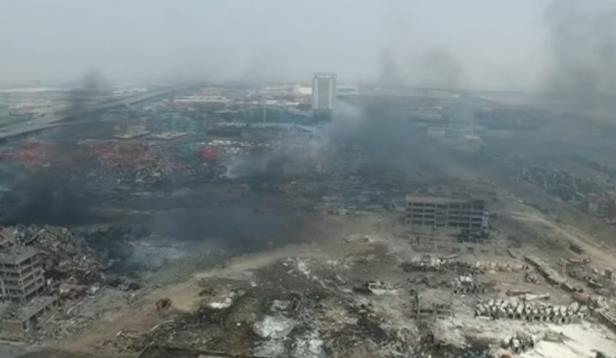
The total insured loss at Tianjin port, following the two blasts that ripped through the port on August 12th, has been estimated at CNY 5 – 10b (USD 833m – 1.67b), by China’s Central University of Finance and Economics and USD 1.0 – 1.5b by Credit Suisse.
Tianjin, the port gateway to Beijing, is a major base for petrochemicals, and is the 10th-busiest container port globally (14m TEU in 2014).
The two huge explosions happened in a warehouse area in the port district in the Binhai New Area of Tianjin, and were equivalent to 3 tonnes of TNT and 21 tonnes of TNT respectively. Vast areas of the port were devastated in the blast that killed 116 people, according to Xinhua. The causes of the explosions are not yet known, but initial reports point to an industrial accident.
According to the Insurance Insider, the Tianjin port explosion could be the most expensive manmade loss since Deepwater Horizon in 2010.
The Insider suggests that if 10,000-12,000 vehicles were destroyed and a valuation of USD 30,000 was used per vehicle, a preliminary estimate of the ground-up vehicle loss would come to USD300m – 360m. Another major loss will be reported in relation to shipping containers, with estimated losses ranging between USD 120 m – 750 m.
Top three insurers in China PICC, Ping An and China Pacific are expected to suffer significant losses from the explosion, according to the University estimates.
“Given the complexity of the loss, which is expected to involve multiple risks across Marine and NonMarine lines, and the situation on the ground for the affected area, it will be some time before provisional loss advice will be released by many cedants,” reinsurance intermediary Aon Benfield said in a summary report.
On the other hand, Fitch Ratings believes that the insured losses from the explosions at Tianjin could exceed USD 1bn-1.5bn.
The high insurance penetration rate in this area could make the blasts one of the most costly catastrophe claims for the Chinese insurance sector in the last few years, Fitch said, adding that the number of reported insurance claims cases would surge further in the coming few weeks.
Fitch believes that claims from the blasts are likely to undermine the financial performance of some regional players and those property and casualty insurers with high risk accumulation in the affected areas. That said, it is too early to determine the exact impact that this incident will have on the credit strength of the Chinese insurance sector as a whole.
However, claims from the blasts could be shared with both local and international reinsurers, which could mitigate the direct impact on the Chinese insurance sector.
“While insurers could recover a portion of their property claims from their reinsurers, their exposure, the amount of retention and the number of reinstatements under the catastrophe reinsurance program are likely to determine the degree of severity to which they are affected. Fitch estimates that the overall risk cession ratios of major non-life players active in the Tianjin region range from 10% to 15%,” Fitch said.
Fitch added that the majority of claims will come from motor, cargo, liability and property insurance. However, medical and life insurance claims are also likely to be substantial.
Each injured person who is insured by the government plan can claim compensation of between CNY20,000 and CNY35,000, depending on the extent of injuries while compensation of CNY50,000 will be paid in the event of death.
(From: World Maritime News)